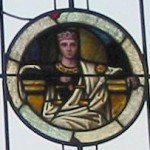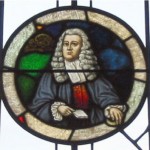 The noted historian, Professor David Herbert Donald of Harvard University, passed away on Sunday, May 17, at the age 88. Professor Donald was a two-time winner of the Pulitzer Prize for Biography and was widely recognized as the preeminent Lincoln scholar of the twentieth century. Although not normally classified as a legal or constitutional historian, scholars who work in those fields are enormously indebted to Donald’s work, particularly in regard to the era of the Civil War and Reconstruction.
The noted historian, Professor David Herbert Donald of Harvard University, passed away on Sunday, May 17, at the age 88. Professor Donald was a two-time winner of the Pulitzer Prize for Biography and was widely recognized as the preeminent Lincoln scholar of the twentieth century. Although not normally classified as a legal or constitutional historian, scholars who work in those fields are enormously indebted to Donald’s work, particularly in regard to the era of the Civil War and Reconstruction.
Born in the central Mississippi hamlet of Goodman in 1920, Donald was a descendant of both Confederate and Union soldiers. His father, Ira Unger Donald, was a farmer, and his mother, Sue Ella Belford Donald, a school teacher. Donald was educated at Holmes Junior College in Goodman; Millsaps College, in Jackson, Mississippi; and the University of Illinois at Champaign-Urbana, from which he received a PhD in History in 1946. At Illinois, he was a student of James G. Randall, the most distinguished Lincoln scholar of the first half of the twentieth century. Randall was the author of Constitutional Problems Under Lincoln (1926), the first major study of Lincoln’s relationship to the Constitution, and of the classic 1937 text, The Civil War and Reconstruction. Randall later selected Donald to prepare a revised edition of the later work, which was published in 1961 (just in time for the Civil War centennial) as Randall and Donald, The Civil War and Reconstruction. The chapters dealing specifically with the Civil War were published separately as The Divided Union (1961).
Donald’s doctoral dissertation was also his first book. A study of Lincoln’s law partner and early biographer, Lincoln’s Herndon (1948), was the first of Donald’s many works that critically evaluated the received wisdom concerning the life and times of the sixteenth president.
Later works included Inside Lincoln’s Cabinet (1954), an edition of the diaries of Treasury Secretary Salmon Chase; Lincoln Reconsidered: Essays on the Civil War Era (1956, 1960, 2001), a collection of singularly brilliant essays; Why the North Won the Civil War (1960); Charles Sumner and the Coming of the Civil War (1960), which won the Pulitzer Prize; The Politics of Reconstruction, 1863-1867 (1965), which made use of recent political science scholarship to reexamine the political dynamic of Congressional actions during the last part of Lincoln’s presidency and the first part of Andrew Johnson’s; Charles Sumner and the Rights of Man (1970); Liberty and Union (1978), a new textbook history of the Civil War era that reflected his thinking since the publication of The Civil War and Reconstruction in 1961; and Look Homeward: A Life of Thomas Wolfe (1987), which also won the Pulitzer Prize.
He was also one of the six historians who contributed to The Great Republic (1977), a highly publicized and somewhat controversial effort to produce a new college-level textbook on American history authored by the country’s most prominent historians. (The six historians were Donald, Bernard Bailyn, Gordon Wood, David Brion Davis, Robert Wiebe, and John L. Thomas).
In 1995, he published his long awaited biography of Abraham Lincoln, entitled simply Lincoln, which paid special attention to Lincoln’s constitutional views and focused upon the way in which Lincoln experienced the events of the Civil War era. Two follow-up volumes, Lincoln at Home: Two Glimpses of Abraham Lincoln’s Domestic Life (1999) and We Are Lincoln Men: Abraham Lincoln and his Friends (2003), examined other aspects of his life. At the time of his death, Donald was working on a biography of John Quincy Adams that focused on Adams’ career after his defeat by Andrew Jackson in the 1828 presidential election.
Though much praised as an elegant stylist whose work was readily accessible to general readers, he was also deeply involved in the methodological debates that occurred within the historical profession during his career. His willingness to incorporate the insights of the social sciences and psychology and psychiatry into his work, while retaining a traditional historian’s hostility to jargon and academic fashion, gave his work a distinctive character.
Donald began his academic career at Columbia University. He subsequently taught at Smith College before returning to Columbia as a full professor in 1957. In 1959-60, he held the distinguished Harmsworth Chair in American History at Oxford University. He later joined the faculty at Princeton and then at Johns Hopkins before coming to Harvard in 1973 as the Charles Warren Professor of American History. In 1978, he became the Chair of the Harvard’s History of American Civilization program, initially co-chairing the program with his long-time friend Daniel Aaron and later directing it on his own. He retired from full-time teaching at Harvard in 1991, when he was named Professor Emeritus. In honor of his 65th birthday, his former students produced a festschrift titled A Master’s Due: Essays in Honor of David Herbert Donald.
He is survived by his wife of many years, Aida D. Donald. Mrs. Donald was an historian and biographer of Theodore Roosevelt, as well as, for many years, executive editor of the Harvard University Press. The Donalds had one son, Bruce Randall Donald of Chapel Hill, N.C., and two grandchildren. During his years at Harvard, Donald resided on Lincoln Road, in the town of Lincoln, Massachusetts.
Donald was invited to the White House by John Kennedy and George W Bush. In the latter part of his career, he was frequently seen on television in documentaries and on stations like C-Span. Since 2005, the Abraham Lincoln Presidential Museum in Springfield, Illinois, has awarded the “David Herbert Donald Prize” for excellence in Lincoln studies.
I first learned about David Donald while an undergraduate at Oberlin College in the early 1970’s. One of my professors, David Rankin, was a former Donald student who was teacher in courses on African-American and Southern history. Reading Donald’s still controversial arguments that the Confederacy collapsed because it was too democratic and that both abolitionists and pro-secession “fire-eaters” were driven to their extreme positions in part because of a form of status anxiety brought about by an increasingly capitalistic society made me realize that history was something more than just a chronicle of past events or the application of broad theoretical principles to the past (which was then much in fashion).
I also had the good fortune to later study under him at graduate school at Harvard in the late 1970’s and early 1980’s. He held the bar high, but he was also unfailingly gracious to his students and generous with his time. Although he is primarily associated with Lincoln and his era, his knowledge and interests were much broader than just that period and he supervised dissertations on a wide variety of topics.
He did, however, draw the line at the history of sports. After I passed my PhD general examinations, I met with him to discuss possible dissertation topics. He asked me what I thinking about, and I mentioned to him that I found it fascinating that in 1850 baseball was basically a folk game played informally with no set body of rules. However, by 1870, the rules had been standardized, there were professional leagues, and the sport was widely hailed as “America’s national game.” I told Donald that I thought it would be interesting to try to trace out the process by which this occurred, particularly since it happened against the backdrop of the Civil War and Reconstruction. Donald appeared to toss my idea around in his head for a minute or two, and then said, in his charming Southern voice, “You know, Gordon, I don’t believe that I could come up with a less interesting historical question.” On that note, I decided to write on the history of the legal profession in the South.
Professor Donald was also a brilliant classroom teacher, as anyone who attended his lectures on the United States in the nineteenth century can attest. His undergraduate classes at Harvard always filled the large lecture halls in which they were scheduled. I had the opportunity to serve as his teaching assistant and whatever success I have had as a teacher has largely been the result of his mentoring and tutoring.
With his passing, the historical profession, and the United States, has lost one of its giants.
 In the previous post, I detailed how the figure to the left of Moses must be Sir William Blackstone. I had thought that the figure to the right of Moses was King Solomon. The iconography of the throne, crown, royal purple, and scales all point to Solomon. However, this figure is beardless, and artists have traditionally depicted Solomon as a bearded, often old, king (see, e.g., a ninth-century German illuminated Bible, and Renaissance depictions such as the panel of Solomon meeting the Queen of Sheba panel from Ghiberti’s famed “Golden Doors” of the Florentine Baptistry, and also the fresco by Piero della Fransceca in Arezzo). On the other hand, artists from later centuries did portray the famous ruler as clean-shaven (see, e.g., this 18th-century Russian icon, and an engraving by the 19th-century master Gustav Doré).
In the previous post, I detailed how the figure to the left of Moses must be Sir William Blackstone. I had thought that the figure to the right of Moses was King Solomon. The iconography of the throne, crown, royal purple, and scales all point to Solomon. However, this figure is beardless, and artists have traditionally depicted Solomon as a bearded, often old, king (see, e.g., a ninth-century German illuminated Bible, and Renaissance depictions such as the panel of Solomon meeting the Queen of Sheba panel from Ghiberti’s famed “Golden Doors” of the Florentine Baptistry, and also the fresco by Piero della Fransceca in Arezzo). On the other hand, artists from later centuries did portray the famous ruler as clean-shaven (see, e.g., this 18th-century Russian icon, and an engraving by the 19th-century master Gustav Doré).
 As I have always loved stained glass windows, one of my favorite locations in the law school is Eisenberg Hall. However, the trio of figures in the north set of windows bear no label, so I was curious about their exact identity. The center figure holding the stone tablets of the Law is of course Moses. Following this Biblical theme of lawgivers, I surmised that the figure to the right (as one looks at Moses) seated on the throne was King Solomon (more on the next blog post). I also guessed that the figure to the left, in the judicial wig, was likely the 18th century jurist
As I have always loved stained glass windows, one of my favorite locations in the law school is Eisenberg Hall. However, the trio of figures in the north set of windows bear no label, so I was curious about their exact identity. The center figure holding the stone tablets of the Law is of course Moses. Following this Biblical theme of lawgivers, I surmised that the figure to the right (as one looks at Moses) seated on the throne was King Solomon (more on the next blog post). I also guessed that the figure to the left, in the judicial wig, was likely the 18th century jurist 